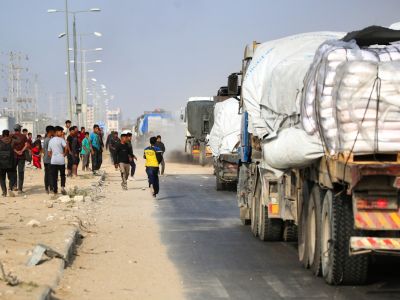China Wednesday dispatched six million officials to knock on doors across this vast country to find out exactly how many people live in the world's most populous nation.
The most comprehensive of the five censuses undertaken by China since 1949 is not merely a count of one fifth of humanity but also an attempt to draw a detailed picture of modern Chinese society.
Each of the estimated 350 million households will be asked at least 23 different questions about their lifestyles and personal circumstances, with census officials insisting all the answers will be treated confidentially.
However many Chinese are skeptical answers will remain a secret, and the count is expected to be skewed by those who have violated China's "One Child" family planning policy and do not want to admit they have unregistered children.
In the village of Longhutai, around 50 kilometers (32 miles) north of Beijing, the complications facing the newly trained census-takers was apparent as the count got under way.
Despite four days of training and five special preparation meetings in the village, 48-year-old Meng Erping was showing distinct signs of nerves as she set out on her rounds with her census forms carefully tucked into a red bag.
"This is the first time I have done this, I have not had much experience," she said to the small cluster of foreign journalists in tow as she made her first call on the village chief's house.
The first visit went off without a hitch but she quickly ended up in a confusing conflict at 48-year-old peasant Zhao Shuhua's house.
Zhao insisted eight people lived at the house, while the census-taker kept repeating that her records showed only seven.
After several minutes the dispute was solved, highlighting a major source of confusion -- Zhao's son, a policeman living in nearby town of Changping, lives with his mother but his official residence card known as a "hukou" places him in Changping.
"It is the place of residence that must be taken into account, not the hukou," chimed in local official Li Huifang, as the Zhao household was formally bumped up to eight.
The definition of the place of residence is likely to be one of the major problems encountered during the census as China has in recent years considerably relaxed its strict controls on the movement of people.
There is currently an estimated floating population of mainly migrant rural workers of between 80 and 120 million people.
Li said there would be no problems with families violating the 20-year "One Child" policy in Longhutai, but she reiterated the census forms would be kept out of the hands of police or family planning officials.
But she added: "All we do is hand the forms to the higher authorities, what happens after that I don't know."
Urban families with more than one child face penalties from being fired or fined at state-run enterprises, having to pay higher school fees and health costs, and being refused the right to register their second child.
The six million census-takers, including one million supervisors, have 10 days to gather the information and five more days to check the results. A first indication of the figures is expected in February.
The forms are to be fed into a computer rather than processed by hand as in previous censuses, and a full analysis and breakdown of all the information gathered is not likely until the end of 2002.
China's 1990 census counted a population of 1.13 billion. Official estimates today range from 1.25 to 1.3 billion people, with an average of 3.6 people in each of the 350 million households.
Trumpeting the success of its family planning policies, the Communist Party has already insisted China's population will not exceed 1.3 billion by the end of the year, casting some doubt on whether full details of the census will be revealed if they show China has substantially more people -- LONGHUTAI (AFP)
© 2000 Al Bawaba (www.albawaba.com)









